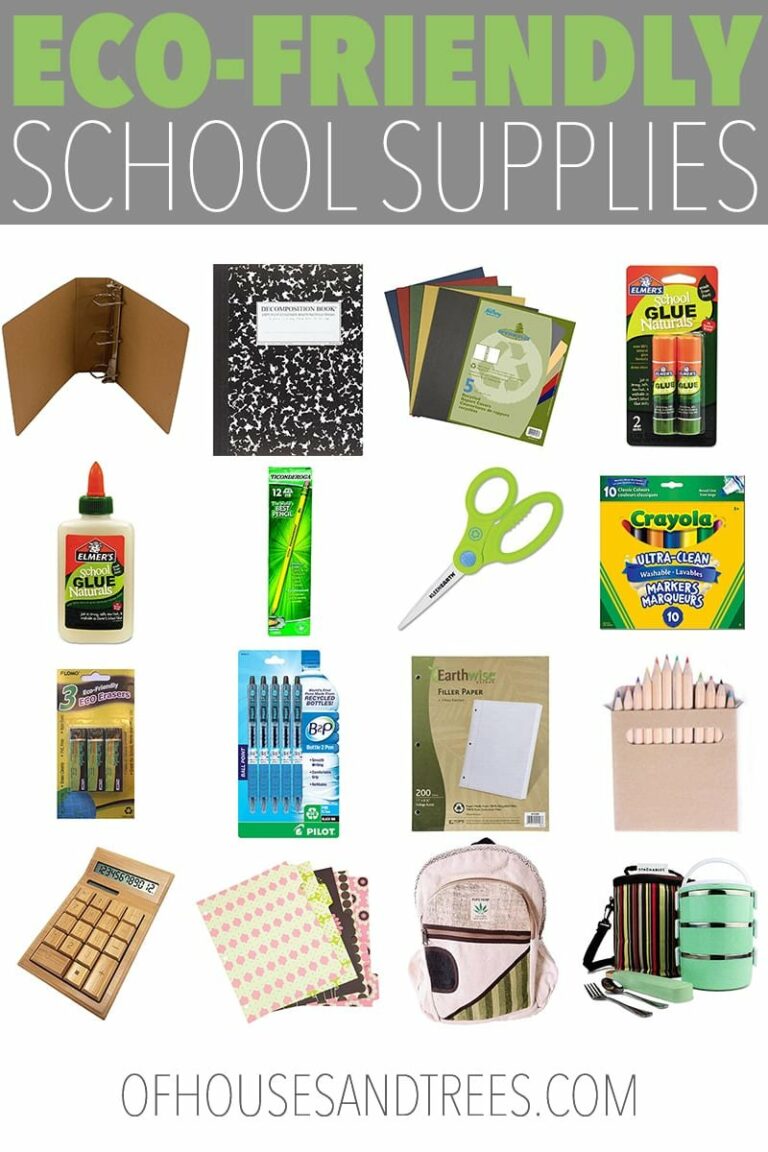Eco-Friendly Materials to Build a House
Want to build an eco-friendly house? Many people are choosing sustainable construction practices to minimize their environmental impact.
Luckily, there are plenty of options available today for creating a beautiful and efficient home while reducing your carbon footprint. From reclaimed wood to energy-efficient windows, eco-friendly materials are transforming the construction industry.
In this article, we’ll explore sustainable building and popular materials for your eco-conscious home. Let’s start your journey towards a greener future!
Eco-Friendly Materials to Build a House:
Building a home is exciting, but it’s important to consider the environmental impact. Luckily, there are eco-friendly materials that can reduce our carbon footprint without compromising quality and aesthetics. Here, we’ll look at sustainable materials for every aspect of house construction, from foundation to roof.
Sustainable Foundations:
The foundation of a house is crucial for its stability and longevity. Here are some eco-friendly options for sustainable foundations:
Rammed Earth:
Rammed earth is an ancient building technique that involves compacting a mixture of earth, gravel, and clay into formwork.
This method eliminates the need for energy-intensive materials like cement and reduces greenhouse gas emissions. Rammed earth provides excellent thermal insulation and has a unique, earthy aesthetic.
Sustainable Concrete:
Concrete is a commonly used material in construction, but traditional concrete production releases substantial amounts of carbon dioxide.
Using environmentally friendly alternatives like geopolymer concrete or recycled concrete can significantly reduce carbon emissions. These options utilize recycled materials and require less energy during production.
Energy-Efficient Walls:
The walls of a house play a crucial role in insulation and energy efficiency. Let’s explore some eco-friendly wall materials:
Straw Bale:
Straw bale construction involves using compacted straw bales as the primary building material. This method provides excellent insulation, reduces the need for heating or cooling, and sequesters carbon within the walls. Straw bale walls are breathable and offer a natural aesthetic that can create a warm and inviting atmosphere.
Timbercrete:
Timbercrete is a blend of sawdust, recycled timber waste, and concrete. This innovative material combines the strength and durability of concrete with the insulating properties of timber. Timbercrete blocks are lighter than traditional concrete blocks, making them easier to handle during construction. The use of recycled timber also reduces the demand for new timber resources.
Roofing Options:
The roof is not only crucial for protecting the house but can also contribute to sustainability. Consider these eco-friendly roofing materials:
Metal Roofing
Metal roofs are durable, long-lasting, and recyclable. They reflect heat, reducing the need for air conditioning, and can be coated with reflective finishes for increased energy efficiency. Metal roofing is an excellent choice for collecting rainwater for household use, contributing to water conservation efforts.
Green Roofs
Green roofs, also known as living roofs or rooftop gardens, offer environmental benefits while providing aesthetic appeal. These roofs are covered with vegetation, which helps absorb rainwater, reduce stormwater runoff, improve air quality, and insulate the building. Green roofs also create a habitat for birds and insects, promoting biodiversity in urban areas.
Sustainable Flooring:
Flooring is an essential aspect of any home, and choosing sustainable options can have a significant impact on the environment. Here are some eco-friendly flooring materials to consider:
Bamboo:
Bamboo is a rapidly renewable resource that regenerates quickly, making it a sustainable alternative to hardwood flooring. Its natural strength and durability make it suitable for high-traffic areas. Bamboo flooring is available in various styles and finishes, offering a versatile and eco-friendly flooring option.
Cork:
Cork is harvested from the bark of cork oak trees without harming the trees themselves. The bark regenerates, allowing for sustainable harvests. Cork flooring provides excellent insulation, and sound absorption, and is resistant to mold and mildew. It is a comfortable and eco-friendly flooring choice for both residential and commercial spaces.
Efficient Insulation:
Proper insulation is crucial for energy efficiency and reducing heating or cooling costs. Here are eco-friendly insulation materials:
Recycled Cellulose Insulation:
Recycled cellulose insulation is made from recycled paper, often sourced from newspapers or cardboard. It is treated with fire-retardant chemicals to enhance safety. This insulation material significantly reduces energy consumption and provides excellent thermal and sound insulation properties.
Sheep’s Wool Insulation:
Sheep’s wool insulation is an eco-friendly alternative to conventional fiberglass insulation. It is a renewable and biodegradable material that offers excellent thermal and acoustic insulation. Sheep’s wool insulation is non-toxic, easy to install, and has moisture-wicking properties, preventing the buildup of mold and mildew.
Water-Efficient Fixtures:
Conserving water is essential for sustainable living. Consider incorporating these eco-friendly fixtures:
Low-Flow Toilets
Low-flow toilets use significantly less water per flush compared to traditional toilets, reducing water waste. They are designed to maintain flushing efficiency while minimizing water usage. Installing low-flow toilets can contribute to water conservation efforts and reduce water bills.
Rainwater Harvesting Systems
Rainwater harvesting systems collect rainwater from roofs and store it for later use. This water can be used for landscaping, flushing toilets, and other non-potable applications, reducing the dependence on freshwater sources. Rainwater harvesting systems help conserve water and reduce the strain on municipal water supplies.
10 Eco-Friendly Building Materials | Sustainable Design
Faqs for Eco-Friendly Materials to Build a House:
Eco-friendly materials to build a house refer to construction materials that have minimal negative impact on the environment during their production, use, and disposal. These materials are made from renewable resources, have low embodied energy, and are non-toxic. Examples of such materials include bamboo, recycled steel, reclaimed wood, straw bales, hempcrete, salvaged materials, and natural insulations like cork or sheep’s wool.
Using eco-friendly materials to build a house has numerous benefits. Firstly, these materials have a lower carbon footprint compared to traditional materials, reducing greenhouse gas emissions. Secondly, they contribute to indoor air quality by minimizing the release of volatile organic compounds (VOCs). Additionally, using sustainable materials helps to conserve natural resources, promotes a healthier living environment, and supports the overall sustainability of our planet.
Eco-friendly building materials contribute to energy efficiency by offering better insulation properties. For example, materials like straw bales, hempcrete, and natural insulations have higher thermal resistance, reducing heating and cooling needs.
While some eco-friendly materials may have slightly higher upfront costs compared to traditional materials, it is important to consider the long-term benefits. Eco-friendly materials often require less maintenance and can contribute to energy savings, reducing overall operational costs. Additionally, as demand for sustainable materials increases, their prices are becoming more competitive. Furthermore, government incentives and rebates are often available to encourage the use of eco-friendly materials, offsetting initial expenses.
To ensure the eco-friendly materials used in building your house are truly sustainable, it is important to do thorough research and verify their certifications. Look for third-party certifications such as LEED (Leadership in Energy and Environmental Design), Forest Stewardship Council (FSC), or Cradle to Cradle (C2C) to ensure the materials meet specific environmental standards. It is also advisable to consult with professionals or green building experts who can guide you in selecting the most sustainable materials for your project.
Final Thoughts
Using eco-friendly materials to build a house is an essential step towards sustainable living. These materials, such as recycled or reclaimed wood, bamboo, and low-VOC paints, offer numerous benefits. Firstly, they significantly reduce the environmental impact of construction by conserving natural resources and minimizing waste. Secondly, eco-friendly materials contribute to better air quality indoors, promoting healthier living conditions for occupants. Additionally, these materials often have high durability, resulting in reduced maintenance and replacement costs in the long run. By choosing eco-friendly materials to build a house, we can create homes that are not only stylish and comfortable but also environmentally responsible.


